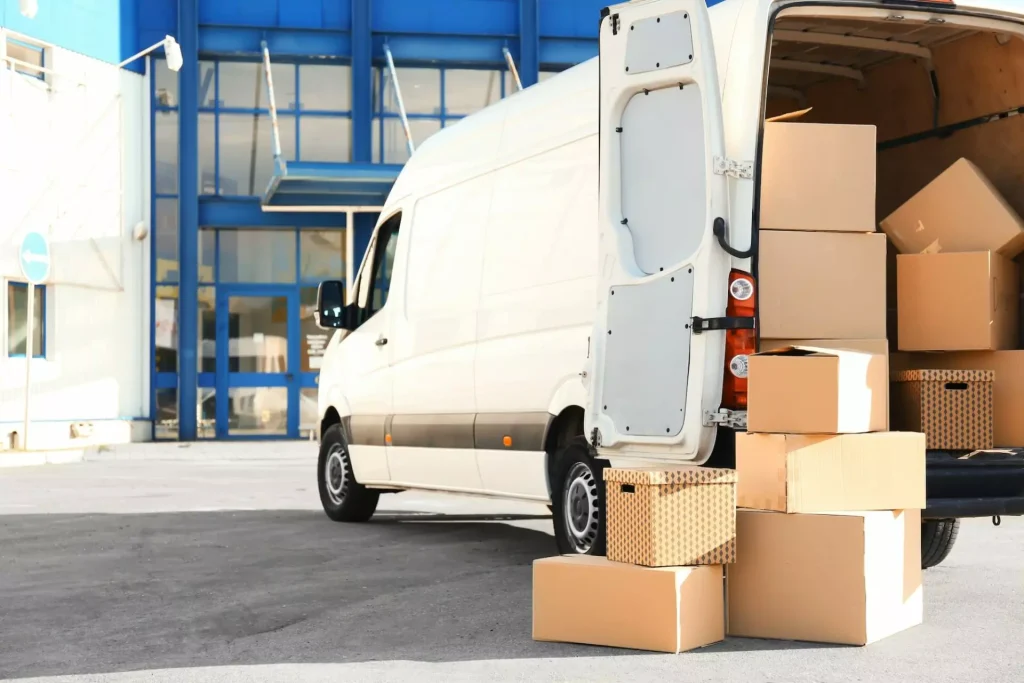Start your long-distance move by packing essential documents first. Gather IDs, passports, lease agreements, and other vital paperwork. Next, organize your seasonal clothing, using vacuum-sealed bags and packing a week’s worth of necessities in an essentials box. Tackle non-essential kitchen items like gadgets and dishware, securing them with proper padding. Carefully pack decorative pieces, labeling boxes as ‘Fragile‘ and making sure they’re handled gently. Wrap up by sorting and packing books and media items, creating an inventory checklist. This approach guarantees you’re off to a great start with your move and there’s much more to keep things seamless.
Essential Documents
When preparing for long distance moves, make sure you have all essential documents such as IDs, passports, and lease agreements readily accessible. It’s important to gather your legal documents and personal records first. Start by setting aside a dedicated folder or binder for these important papers. This should include your birth certificates, Social Security cards, and any legal documents like marriage certificates or divorce decrees.
Don’t forget about medical records and school transcripts if you have kids. These personal records can be vital for enrolling in new schools or visiting new doctors. It’s a good idea to make copies of everything and keep the originals in a safe, but accessible place. Digital backups on a secure cloud service can also provide extra peace of mind.
Additionally, make sure you have your insurance policies, such as health, home, and auto, within reach. If you’re renting, keep your lease agreements and any correspondence with your landlord close at hand.
Being organized with these documents will help you avoid unnecessary stress and potential delays. So, take the time to compile and organize all these essential documents before you tackle the rest of your move.

Seasonal Clothing
As you prepare for your long distance move, consider the seasonal clothing you’ll need immediately upon arrival to avoid unnecessary unpacking. It’s important to think about the weather conditions at your new location and pack accordingly.
Here are some practical steps to help you manage this efficiently:
- Assess the Climate: Research the weather forecast for your new home. If you’re moving in winter, pack warm coats, gloves, and scarves where you can easily access them. For a summer move, prioritize light, breathable fabrics.
- Sort by Season: Divide your wardrobe into seasonal categories. Pack off-season items first, as you won’t need them immediately. This can help drastically reduce the amount of clothing you’ll need to unpack right away.
- Use Storage Solutions: Employ vacuum-sealed bags or plastic bins for off-season clothes. These storage solutions save space and keep your belongings organized and protected during the move.
- Create an Essentials Box: Pack a box with a week’s worth of season-appropriate clothes. Label it clearly and keep it with you, so you’re not scrambling to find suitable outfits upon arrival.
Non-Essential Kitchen Items
Streamlining your kitchen by packing non-essential items first can greatly alleviate the stress of your long distance move. Start with those gadgets and utensils you rarely use. Your bulky bread maker, waffle iron, and fondue set can all be packed up early. Use their original appliance boxes if you have them; they provide the best protection.
Next, tackle your glassware storage. Wrap each glass individually in packing paper or bubble wrap to prevent breakage. Place them upright in sturdy boxes, filling any gaps with crumpled paper to avoid shifting during transit. Label these boxes as ‘Fragile’ to ensure cautious handling.
Consider packing up excess dishware, like extra plates, bowls, and serving platters. You won’t need all of them in the weeks leading up to your move. Pack them securely in boxes, using plenty of padding between each item.
Lastly, pack away specialized cooking tools and pantry items you can do without for a bit. Things like cake pans, holiday cookie cutters, and that extra set of mixing bowls can be safely stored away.
Decorative Pieces
Start by packing your decorative pieces to make sure they’re safely stored and ready for the move. These items are often fragile and can be difficult to replace, so it’s important to take extra care in packing them. Here’s a quick guide to help you:
- Gather Supplies: You’ll need sturdy boxes, bubble wrap, packing paper, and tape. Don’t skimp on quality; good materials make a difference.
- Use Protective Wrapping: Wrap each decorative piece individually. For delicate items like glass and ceramics, use bubble wrap. For less fragile items, packing paper will do.
- Label the Boxes: Clearly mark each box as ‘Fragile’ and indicate which room it belongs to. This ensures that movers handle them with care and place them in the right location.
- Fill Empty Spaces: Use packing peanuts or crumpled paper to fill any gaps in the boxes. This prevents items from shifting and potentially breaking during the move.
Books and Media
When packing your books and media, make sure they’re organized and protected to prevent damage during the move. Start by sorting your books and media items. Take a moment for organizing shelves and deciding what you’ll take, donate, or discard. It’s a great opportunity to declutter.
Once you’ve decided, create a media inventory. This checklist will help you keep track of what’s packed and what’s missing upon arrival.
After organizing, pack your books first. Use small, sturdy boxes to avoid overloading and potential breakage. Place heavier books at the bottom and lighter ones on top. Fill any gaps with packing paper to prevent shifting. For extra protection, wrap valuable or delicate books in bubble wrap.
Next, move on to your media items like CDs, DVDs, and vinyl records. Use appropriate-sized boxes and consider padding the items with bubble wrap or packing paper. Label each box clearly with its contents and the room it belongs to.
